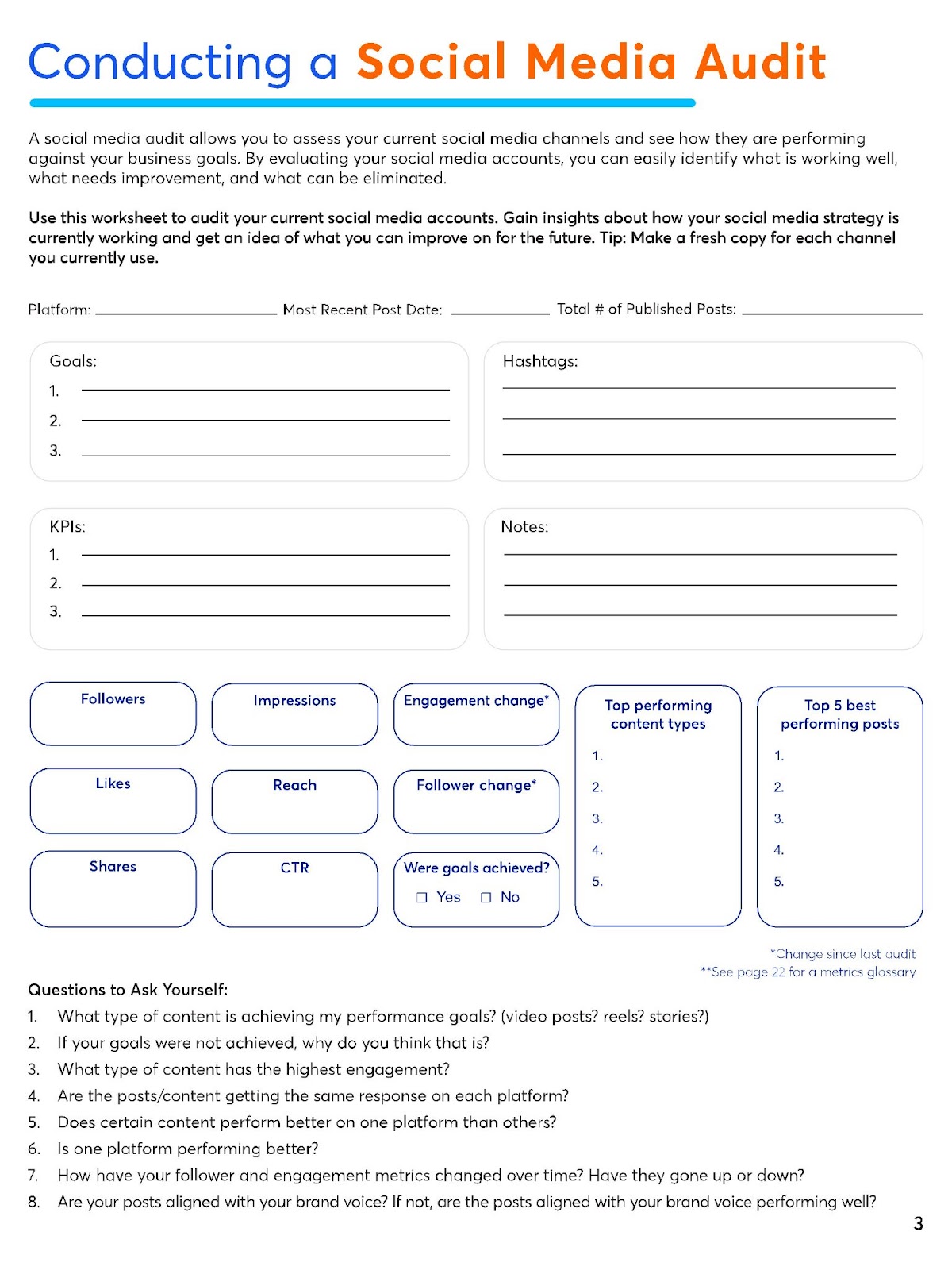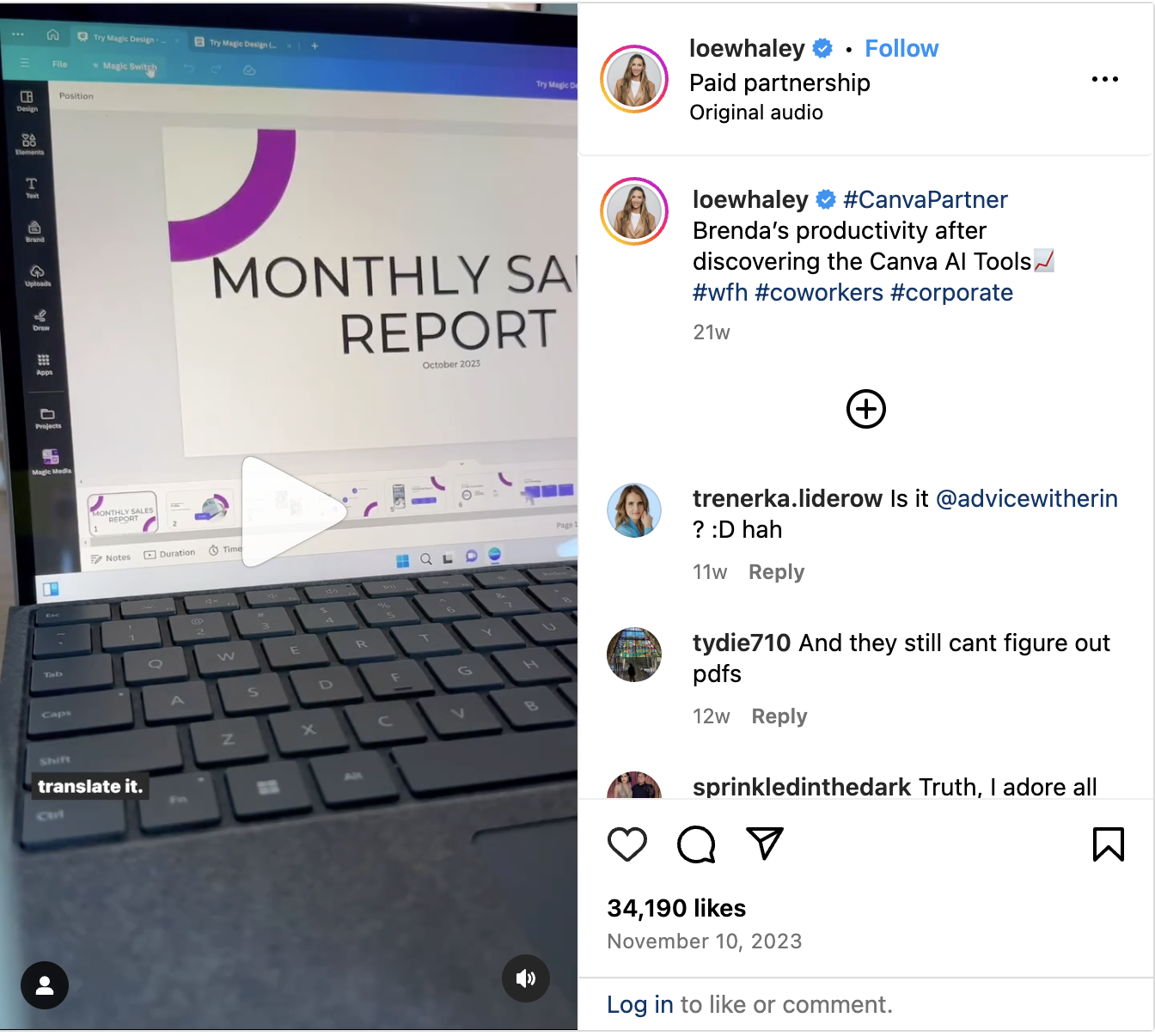Social media has become a must-have tool for businesses of all sizes. With over four billion active users worldwide, social media platforms offer an opportunity for businesses to reach and engage with customers.

From understanding the core responsibilities of a social media manager to mastering the art of content creation and community management using social media tools, we’ll provide you with the knowledge and strategies you need to excel.
So, whether you’re just starting out or looking to take your social media management skills to the next level, this blog post is your ultimate guide.
- Introduction to Social Media Management
- Core Responsibilities of a Social Media Manager
- Strategizing for Social Media
- How to Manage Social Media Profiles
- Content Creation & Curation for Social Media
- Social Media Advertising
- Community Management and Reputation Management
- Social Media Collaboration and Team Management
- Social Media Management Tools and Software
- Analytics and Reporting in Social Media Management
- Advanced Social Media Management Strategies
- Special Considerations for Agencies
- The Future of Social Media Management
- Additional Resources for Social Media Management
- Conclusion
Introduction to Social Media Management
Social media has become an integral part of our lives. From staying connected with our friends and family to sharing our thoughts and experiences, social media platforms have revolutionized the way we communicate and interact.
But, social media management for a business differs from using social media platforms for your personal life. To build effective social media marketing campaigns, business owners, marketers, and social media managers need to understand how to strategize.
One effective strategy for promoting a business on social media is making the content fun and shareable. This Barbie-themed selfie movie poster template is an example of a successful campaign incorporating an interactive element for social media users. People loved sharing their Barbie-themed selfies, and the campaign went viral.
What’s the meaning of social media management?
For businesses, social media presents an opportunity to connect with their target audience, build brand awareness, and drive growth. Knowing the meaning of social media management is crucial for businesses looking to harness the full potential of these platforms.
Social media management includes activities like:
- creating and publishing content
- engaging with followers
- monitoring brand mentions
- analyzing data to measure performance.
Skills needed for social media management
Social media management requires a deep understanding of the target audience, chosen platforms, and the latest social media trends.
A successful social media manager must be:
- creative
- strategic
- analytical
- communicative
- interpersonal.
There are various types of social media platforms, each with its own unique characteristics and user base. Some of the most popular platforms include:
- TikTok.
Each platform offers different features and functionalities, catering to various demographics and purposes. Understanding each platform’s specific characteristics and target audience is essential for developing tailored social media strategies.
Core Responsibilities of a Social Media Manager
Social media managers are like the architects of a brand’s online presence. What is the role of a social media manager? They are responsible for the many tasks that make up managing a brand’s social media presence. Each task contributes to the success of a brand’s online presence and business goals.
Social media manager’s tasks include:
- Creating and implementing strategies
- Visual content creation and copywriting
- Community engagement
- Data analysis.
Creating and implementing strategies
They create and execute comprehensive social media strategies. Social media managers take time to get to know a brand’s target audience by conducting market research and their preferences and behavior on social media. With these insights, they craft tailored content strategies that resonate with the brand’s audience and effectively convey its message.

Visual content creation and copywriting
Another cornerstone of a social media manager’s role is creating engaging content that gets people interested in following a brand’s social media. Leveraging their creativity and knowledge of the target audience, they develop visually appealing shareable content that captures attention and encourages interaction, including likes, comments, shares, and reposts.
This may include crafting compelling captions, designing eye-catching graphics, and curating relevant videos or images. To ensure brand consistency, social media managers adhere to established brand guidelines and maintain a cohesive visual aesthetic across all posts.
Some examples of visual content and copywriting are:
- Long-form content
- Short form content
- Live stream
- Stories
- Shoppable content (use an e-commerce integration like Shopify)
- Curated content
Community engagement
Engaging with followers is paramount to building a strong and loyal social media community. Social media managers foster meaningful connections with the audience by responding to comments, mentions, and direct messages in a timely and personalized manner. They also actively participate in relevant online discussions, forums, and groups, positioning the brand as a thought leader and industry expert.
Data analysis
The effectiveness of social media campaigns is measured by tracking and analyzing the results of social media posts. Social media managers use analytics tools to monitor key performance indicators (KPIs), such as reach, engagement, website traffic, and conversions.
Analyzing this data gives them valuable insights into audience behavior, campaign performance, and overall ROI. The information is then used to refine strategies, optimize content, and maximize campaign effectiveness.
Strategizing for Social Media
A well-executed social media strategy can help businesses reach new customers, build relationships with existing customers, and drive sales. You can create and implement your social media strategy by setting goals and objectives, researching who you want to reach on social media, and tracking your progress.
Set goals and objectives
The first step in developing a successful social media strategy is to set clear SMART goals and objectives. “SMART goals” stand for goals that are specific, measurable, attainable, relevant, and time-bound.
Some things to consider when setting your goals and objectives are:
- What do you want to achieve with your social media presence?
- Do you want to increase brand awareness, generate leads, or drive sales?
Once you know what you want to achieve, you can develop a plan to reach your goals.
Know your audience
Next, you need to identify who you are trying to reach with your social media content so you can tailor your content to their interests and needs.
The key to success on social media is to create content that your audience will find interesting, informative, and entertaining. Your content should be visually appealing and easy to digest.
In addition to creating great content, you should engage with your audience by responding to comments and messages, joining in on conversations, and sharing your content across multiple platforms. The more active you are on social media, the more likely you are to reach new customers and build relationships with existing customers.
Track and measure
Finally, you need to track your results and measure your progress. This will help you see what’s working and what’s not, so you can make adjustments to your strategy as needed. There are a number of different tools available to help you track your social media results, such as Google Analytics and Sprout Social.
By following these steps, you can develop a successful social media strategy that will help you reach your business goals.
How to Manage Social Media Profiles
Effectively managing social media profiles is the best way to get the most out of marketing businesses on social media.
How do I start social media management?
To get started with social media management, follow the steps below.
1. Conduct a social media audit

2. Create a Content Calendar
Using a content calendar to plan your social media posts is a great way to ensure a consistent and strategic posting schedule. Seeing your posts organized in a calendar will also help you determine the type of content you will share. Some ideas for social media content are:
- promotional posts
- industry news
- engaging visuals
- interactive content.
Remember, consistency is key to building a loyal following, and a social media content calendar will help maintain consistency.
3. Craft Engaging Content
Create high-quality, relevant, and engaging content that resonates with your target audience. You can get creative by using a mix of visuals, videos, and interactive elements to capture attention and encourage engagement.
Tailor your content by considering what works best on each platform’s unique characteristics and audience preferences.
Read now: How to Create Impactful Shareable Content on Social Media
4. Engage with Your Audience
Social media is a two-way street. Actively engage with your audience by responding to comments, messages, and mentions promptly. Show appreciation for their interactions and encourage conversations to build a sense of community.
5. Utilize Social Media Analytics
Most social media platforms offer built-in analytics tools that provide valuable insights into your audience engagement, reach, and overall performance. Analyze these metrics regularly to understand what’s working and what needs improvement.
6. Run Social Media Ads
Social media advertising can help you reach a wider audience and achieve specific business goals. Platforms like Facebook and Instagram offer robust ad targeting options to ensure your ads are shown to the right people. Experiment with different ad formats, targeting options, and budgets to optimize your campaigns.
7. Collaborate with Influencers
Partner with relevant influencers in your industry to extend your reach and tap into their engaged audience. Influencer collaborations can help you create authentic and impactful content that resonates with your target market.
8. Monitor Your Competition
Keep an eye on your competitors’ social media activities to gain insights into their strategies, content performance, and audience engagement. This will help you identify opportunities to differentiate your brand and stay ahead of the competition.
9. Stay Updated with Trends
The social media landscape is constantly evolving, so staying updated with the latest trends is crucial. Keep an eye on emerging platforms, content formats, and engagement strategies to ensure your social media presence remains fresh and relevant.
Content Creation & Curation for Social Media
By creating and publishing high-quality, valuable, and engaging content, you can capture the attention of your target audience, build brand awareness, and drive traffic to your website.
To create content that resonates with your audience, start by understanding their interests, needs, and pain points. Personalize your content to address these specific concerns and provide solutions or insights that they can benefit from.
Use a mix of content types
Keep your audience interested in your posts by sharing a variety of content. Different types of content that are great for social media marketing are:
- text posts
- images
- videos
- infographics
- memes
Try to keep your content fresh and visually appealing to get people’s attention.
Focus on quality content
When it comes to how to create insanely good online content, focus on quality over quantity. Each social post should be intentional, with well-written captions and nice visuals to grab attention and encourage users to engage with your posts.
Don’t forget to optimize your content for each platform’s search engines by including relevant keywords and phrases in your captions (and hashtags where appropriate).
Use relevant hashtags
Increase the visibility of your social media posts by using hashtags that are relevant to the topics of your posts or your industry. Hashtags can help people searching for those keywords or phrases on social media find your content. Find hashtags by using the search bar feature available on social media platforms.
Stick to using a few hashtags on each post. Using too many hashtags can affect how your content performs on social media.
Curate content from reliable sources
Finding content that’s relevant to your industry and audience and strategically sharing it is a great opportunity to provide more value to your audience without overly talking about your business in your social media posts.
You can start by setting aside time to scroll through your favorite businesses posts to find content that’s share-worthy. Create a content curation strategy to get the most of curating content for social media.
Create opportunities for audience engagement
Encourage your audience to share their thoughts and experiences and use their feedback to refine your content strategy. By creating high-quality content and engaging with your audience, you can build a strong social media presence and achieve your business objectives.
Don’t forget to engage with your audience. Respond to comments, messages, and mentions to build relationships and foster a sense of community around your brand.
Social Media Advertising
Social media advertising is a powerful way to reach new customers and grow your business. There are different types of social media advertising, each with its own advantages and disadvantages.
Pay-per-click advertising
The most common type of social media advertising is pay-per-click (PPC) advertising. With PPC advertising, you only pay when someone clicks on your ad.
This can be a cost-effective way to reach new customers, but it can also be expensive if your ad doesn’t get a lot of clicks.
Social media remarketing
Another type of social media advertising is social media remarketing. With social media remarketing, you can show ads to people who have already visited your website or interacted with your social media page.
Use social media remarketing to remind people about your business and encourage them to make a purchase.
Social media advertising can be a great way to reach new customers and grow your business. However, it’s important to use social media advertising effectively to get the most out of your investment.
Tips for creating effective social media ads
1. Use high-quality images and videos.
People are more likely to click on ads that are visually appealing.
2. Write clear and concise ad copy.
Your ad copy should be clear and concise, and it should highlight the benefits of your product or service.
3. Target your ads to the right audience.
Social media advertising allows you to target your ads to specific demographics, interests, and even keywords. This can help you reach the people who are most likely to be interested in your product or service.
4. Set a budget and track your results.
It’s important to set a budget for your social media advertising campaigns and to track your results so that you can see what’s working and what’s not.
By following these tips, you can create effective social media ads that will help you reach new customers and grow your business.
Community Management and Reputation Management
Knowing what is social media community management and reputation management for businesses will help you effectively manage social media. By knowing how to effectively manage your online community and reputation, you can build trust and loyalty with your target audience.
Community management
Community management is the process of building and maintaining relationships with your followers on social media.
This involves engaging with them on a regular basis, responding to their comments and messages, and creating a sense of community around your brand. Effective community management can help you to increase brand loyalty, boost sales, and generate positive word-of-mouth marketing.
Reputation management
Reputation management is the process of monitoring and managing your online reputation.
This involves responding to negative reviews and comments, as well as promoting positive content about your brand. Effective reputation management can help you protect your brand’s reputation, build trust with potential customers, and increase your revenue.
Tips for effectively managing your online community and reputation
- Be responsive
Respond to comments and messages from your followers as quickly as possible. This shows that you value their feedback and are interested in what they have to say.
- Be positive
Always be positive and upbeat in your interactions with your followers. This will help to create a positive atmosphere in your community and make people want to engage with you.
- Be authentic
Let your personality or the company’s brand voice shine through in the social media posts. People are more likely to connect with you or the brand if they feel like they know the real you or that there is a human touch to the brand posting on social.
- Be consistent
Post regularly and maintain a consistent brand voice across all of your social media channels. This will help to build brand recognition and make it easier for people to find you.
- Be vigilant
Monitor your online reputation regularly and respond to any negative reviews or comments in a timely and professional manner. This will help to protect your brand’s reputation and build trust with potential customers.
By following these tips, you can effectively manage your online community and reputation and use social media to grow your business.
Social Media Collaboration and Team Management
Social media collaboration and team management is an important part of any social media marketing campaign. A well-coordinated team with clearly defined roles and responsibilities is essential for creating and executing a successful social media strategy.
Building a successful social media team starts with hiring the right people. Look for individuals with strong writing skills, creativity, and a passion for social media. It’s also important to find team members who are able to work well together and who are willing to contribute their own ideas and perspectives.
Once you’ve assembled your team, it’s important to establish clear roles and responsibilities. This will help to avoid confusion and ensure that everyone is on the same page.
Some common roles in a social media team include:
- Content creator: responsible for creating engaging and shareable content
- Community manager: responsible for engaging with followers and responding to comments and messages
- Social media strategist: responsible for developing and executing the social media strategy
- Social media analyst: responsible for tracking and analyzing social media data
In addition to establishing clear roles and responsibilities, it’s also important to create a system for communication and collaboration. This could include:
- regular team meetings
- project management tools or simply a shared document where team members can post ideas and updates
- creating an approval process for content
- organizing and maintaining content in an asset library (some project management tools can be a good resource for this!)
By following these tips, you can build a successful social media team that will help you achieve your marketing goals.
Social Media Management Tools and Software
Social media management tools and software can help you save time, increase efficiency, and track your results. These tools can help you manage your social media accounts, create and schedule content, engage with your audience, and track your progress.
Constant Contact is a great tool for small businesses to manage their social media. You can create, schedule, and track the results of social media posts.

There are many different types of social media management tools available, each with its own unique features and benefits. You can determine what is the best social media management tool for your business based on the features you most need to meet your social media management goals.
Some other social media tools and software include:
Hootsuite
Hootsuite is a comprehensive social media management tool that allows you to manage multiple social media accounts from a single platform. It includes features for creating and scheduling content, engaging with your audience, and tracking your progress.
Buffer
Buffer is a simple and easy-to-use social media management tool that allows you to schedule content, track your progress, and collaborate with your team. It is a great option for small businesses and individuals who are just starting out with social media marketing.
Sprout Social
Sprout Social is a powerful social media management tool that offers a wide range of features, including content creation, scheduling, engagement, and analytics. It is a great option for businesses of all sizes that are looking for a comprehensive social media management solution.
SocialPilot
SocialPilot is a social media management tool that allows you to manage multiple social media accounts from a single platform. It includes features for creating and scheduling content, engaging with your audience, and tracking your progress.
AgoraPulse
AgoraPulse is a social media management tool that offers a wide range of features, including content creation, scheduling, engagement, and analytics. It is a great option for businesses of all sizes that are looking for a comprehensive social media management solution.
These are just a few of the many social media management tools available. With so many different tools to choose from, you can find the perfect tool to meet your needs and budget.
Analytics and Reporting in Social Media Management
Analytics and reporting are essential for social media management. They allow you to track your social media performance, identify key metrics, and create reports that will help you improve your social media marketing efforts.
By tracking your social media performance, you can see what’s working and what’s not. You can use the information to make adjustments to your social media strategy and improve your results.
Track key metrics
Reach: This metric measures the number of people who see your social media content.
Impressions: This metric measures the number of times your social media content is displayed.
Engagement: This metric measures the number of people who interact with your social media content, such as by liking, commenting, or sharing it.
Click-through rate (CTR): This metric measures the percentage of people who click on your social media content.
Conversion rate: This metric measures the percentage of people who take a desired action after seeing your social media content, such as making a purchase or signing up for a newsletter.
Use reports to analyze key metrics
In addition to tracking these key metrics, you should also create reports that analyze your social media performance. These reports can help you identify trends, spot opportunities for improvement, and measure your progress over time.
There are a number of different tools that you can use to track your social media performance and create reports.
Some of the most popular tools include:
These tools can provide you with a wealth of information about your social media performance. By using them, you can gain a deeper understanding of your audience, improve your social media marketing efforts, and achieve your business goals.
Advanced Social Media Management Strategies
Advanced social media management strategies can help you take your social media marketing to the next level. By implementing these strategies, you can increase your reach, engagement, and conversions, and build a stronger relationship with your customers.
Crisis Management on Social Media
Having a plan in place before a crisis, negative comments, or negative posts on social media can help your business maintain a good reputation with your audience. Learning how to respond to negative feedback is essential for social media management. Think of different crisis scenarios that can happen in your industry and create plans for the steps your business should take to respond to the crisis.
How you respond to a crisis on social media depends on how severe the crisis is and your brand’s voice and tone. Some ways to respond to a crisis on social media are:
- ask for information and provide a way for them to contact your business
- write a sincere apology when appropriate
- send a gift card or offer a refund when appropriate.
SEO Integration and Content Discoverability
Another advanced social media management strategy is to integrate SEO and content discoverability in your social media posts. Businesses can use the native search bar in each social media platform to search for key phrases, hashtags, and topics that are relevant and have a high number of searches.
Posting content with these key phrases, hashtags, and topics will help the content be discovered by social media users that fit your audience.
Special Considerations for Agencies
Marketing agencies often manage several clients at the same time. Agencies managing social media for multiple clients must customize each social media strategy based on each client’s unique needs, expectations, and business goals.
To start, agencies must understand each client’s business, create a custom social media strategy, and define their success metrics.
Once working on client’s social media campaigns, agencies must communicate effectively with clients, manage expectations, and deliver results.
To help you manage your clients’ campaigns, consider partnering with a digital marketing platform.
Understanding each client’s business
To be successful, agencies must have a deep understanding of the client’s business. This includes the client’s target audience, marketing goals, and unique selling proposition. With this understanding, agencies can create a social media strategy that is tailored to the client’s specific needs.
Creating social media strategies for clients
Creating a custom social media strategy for clients is essential for agencies. Each strategy should include specific goals, target audience, content calendar, and budget. The strategies should also be flexible enough to adapt to changing trends and client needs.
Tracking and measuring results for clients
Measuring results is essential for agencies to demonstrate the value of their work to their clients. Agencies should track key metrics such as reach, engagement, and conversions. They should also provide clients with regular reports on their social media performance.
The Future of Social Media Management
The future of social media management is bright. With the continued growth of social media, there will be an increasing need for professionals who can manage social media campaigns effectively. Stay updated on key trends that shape the future of social media management. Some trends in social media include:
- Increased use of emerging trends and technologies
Managing social media will always be an evolving role. Learn about new social media platforms and consider creating an account if your target audience finds their way there. Keep a look out for trends that make sense for your business or your clients.
- The rise of social media influencers
Social media influencers are people who have a large following on social media and can influence the purchasing decisions of their followers. Businesses are increasingly partnering with social media influencers to promote their products and services.
One brand successfully implementing social media influencers in its marketing campaigns is Canva. Canva partnered with Laura Whaley (@loewhaley on Instagram) to promote its AI tools.

- The continued growth of social media advertising
Social media advertising is a cost-effective way for businesses to reach their target audience. With the right social media advertising strategy, businesses can generate leads, increase sales, and build brand awareness.
An example of a successful social media ad campaign is from The BASH, a music festival in Gainesville, Florida. Using social media advertising, The BASH was able to target its audience on social media. The BASH took it a step further and implemented retargeted ads, too.

To keep up with an evolving landscape, social media managers need to have a strong understanding of current trends, influencer marketing, and social media advertising. They also need to be able to create and publish high-quality content, engage with their audience, and promote their social media channels. By following these tips, social media managers can prepare for the future of social media management and help their businesses succeed.
Additional Resources for Social Media Management
There are many additional resources you can use to further enhance your understanding and skills in social media management. These resources include informative articles, insightful blog posts, and useful tools that will empower you to excel in social media management. A few resources are:
- LinkedIn Learning: Social Media Marketing
- Social Media Today
- Social Media Campaigns Strategies for Public Relations and Marketing by Carolyn Mae Kim
- Social Media Examiner
- Constant Contact blog
Conclusion
Social media management has rapidly evolved into a critical component of modern marketing strategies, empowering businesses to connect with their target audience, build brand awareness, and drive business growth.
As we move forward, social media will continue to play a pivotal role in communication and commerce, making it essential for organizations to embrace social media management as a strategic imperative.
Remember, social media management is a dynamic field that constantly evolves. Stay updated with the latest trends, tools, and strategies to leverage the full potential of social media for your business success.
Download our exclusive eBook “Own the Social Sphere: Your Ultimate Guide to Social Media” for additional insights and practical tips to help you dominate the social media landscape.





